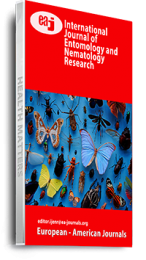The menace of pesticides and demand for organically produced agricultural products has forced the Indian Government to promote organic agriculture in the North-eastern states through special schemes and programs such as ‘Technology Mission for North East and through setting up of a special Agricultural Export Zone. In the absence of insecticides, Entomopathogenic Nematodes (EPNs) are the best and most useful agents for the management of insect pests ranging from Lepidoptera, Diptera to Coleoptera. EPNs and their symbiotic bacteria together form efficient biocontrol agents that are widely used worldwide for insect-pest management in different agro-ecosystems. The EPNs of the families Steinernematidae and Heterorhabditidae are associated with bacteria of genus Xenorhabdus and Photorhabdus respectively. Here, we present a brief review of the various species of EPN and EPB isolated from soils of North East India and the current trend of research on the efficacy of EPN as bio-pesticide in northeastern agro-climate. Reports on EPN research and its uses as bio-pesticide are available only from 4 out of 8 states of North East India. A total of 24 EPN species comprising14 from Assam, 5 from Meghalaya, 4 from Mizoram, and 1 from Manipur were identified under three genera- Heterorhabditis (7 spp.), Steinernema (15 spp.), and Oscheius (2 spp.). Studies on efficacy testing reported that EPN species Heterorhabditis indica showed great efficacy against tea mosquito bug, tea termite, white grubs, tobacco cutworm, mustard sawfly, and greater wax moth in Northeast India. This encouraging current status of EPN research in NE India will provide a footing ground for further exploration, isolation, characterization, and biosystematics of EPNs and their symbiotic bacteria (EPBs) from the soils of varied agro-climatic conditions of this region. We conclude that isolation together with testing of the efficacy of EPN strains through massive field trials against pests of seasonal crops are essential to realizing the potential of EPNs formulations as potent biological pest management tools to promote organic agriculture in North East India.
Keywords: Biopesticide, Organic agriculture, entomopathogenic nematode, heterorhabditis, oscheius, steinernema

